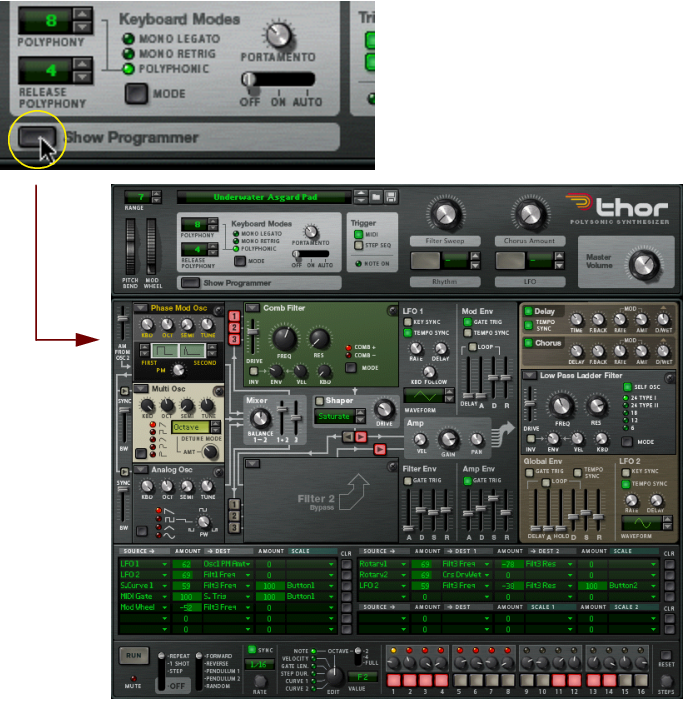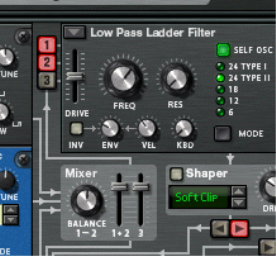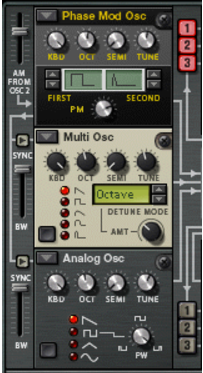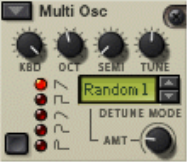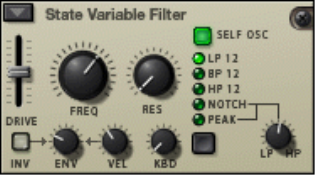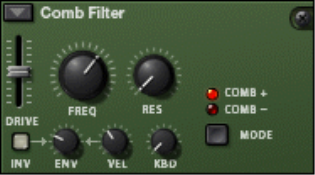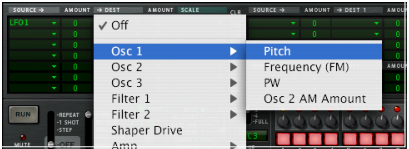This chapter assumes familiarity with common synth terminology like oscillators, waveforms, filters and envelopes. If you are new to Reason (or these terms), you may want to read the “Subtractor Synthesizer” chapter first, where these elements and how they interact are described from a more basic point of view.
|
|
Note that you can also connect sections using the Modulation bus section (see “Modulation bus routing section”). You are not in any way limited to the pre-defined routings, but they do provide a quick and convenient way to connect the basic synth “building blocks” together.
|
The following oscillator types are available; Analog, Wavetable, Phase Modulation, FM Pair, Multi and Noise. For a description of the various oscillator types, see “The Oscillator section”.
A pop-up menu with the four available Filter types appears. For a description of the filter types, see “Filter slots”.
|
6.
|
That concludes this tutorial on how the pre-wired connections in the Voice section can be used, but note that you can also use the Modulation bus to make connections - see “Modulation bus routing section”.
|
•
|
|
•
|
|
•
|
|
|
|
•
|
|
•
|
|
•
|
|
| Mode
|
|
Thor has three open Filter slots, two in the Voice section (which act per-voice) and one in the Global section which is global for all voices (see “Global Filter slot”).
The pre-defined routings of the three oscillators into the Filter 1-2 sections is described in the “Basic connections - a tutorial” passage.
|
|
There are three Envelope generators in the Voice section. These are the Amp envelope, the Filter envelope and the Mod envelope. Each voice played has a separate envelope. There is also an additional Global Envelope which is described separately - see “Global Envelope”.
See “Filter slots” for a description of the filter types.
|
•
|
|
9.
|
|
|||
|
|||||||
|
|||||||
|
|
|
•
|
|
| Function
|
|



